Margaux Smith was about to graduate from OCAD University in May, 2015, when LE Gallery director, Wil Kucey, offered her to host her very first solo show. A year later, What The Moon Saw took off at LE Gallery with a packed and successful opening.
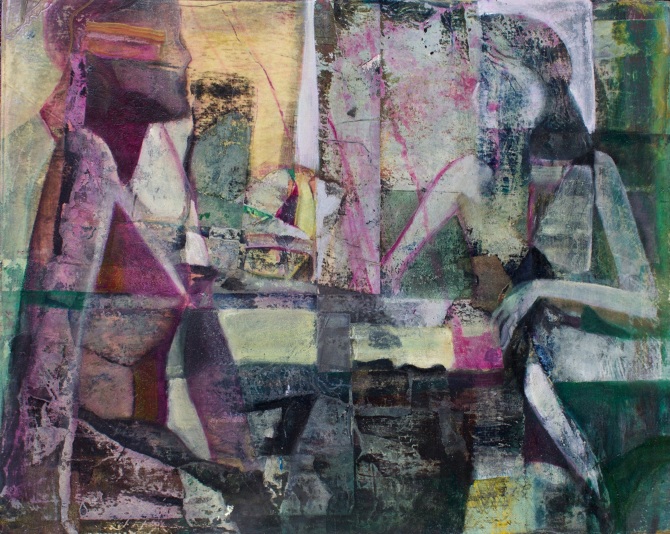 Margaux Smith, Sisters of Lais, 2015-16, collage and oil on panel, 16″ x 20″. Image courtesy of LE Gallery
Margaux Smith, Sisters of Lais, 2015-16, collage and oil on panel, 16″ x 20″. Image courtesy of LE Gallery
Seventeen pieces are included in What The Moon Saw and each challenges my perception. I couldn’t quite grasp the technique and the medium used to achieve such a luscious and complex surface. After sitting down with the artist for a quick interview, I realized that the key to understand her narratives lays in her creative process. Each piece is the result of a constant dialogue between herself, the mediums and the viewer; between controlled gesture and induced chaos; between historical references and vanguard aesthetic; between the familiar and the unknown.
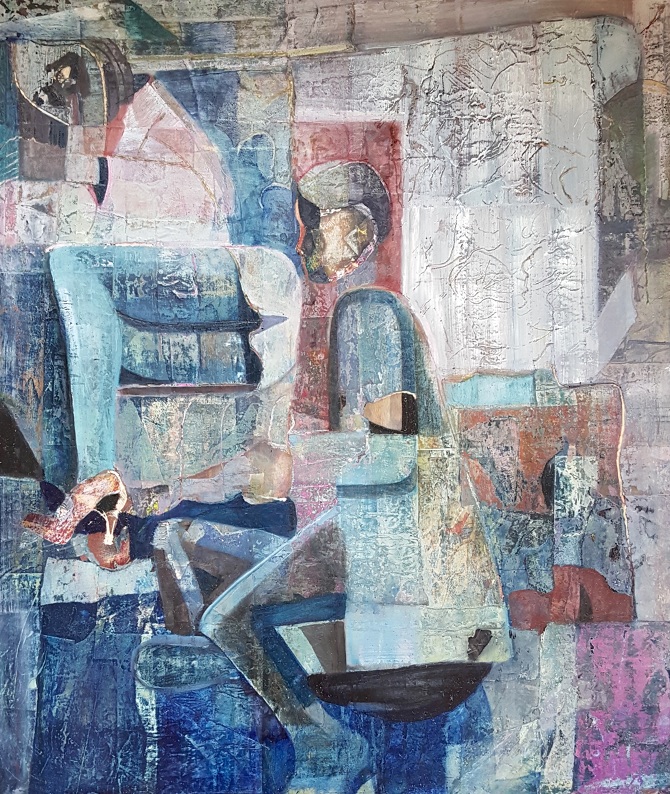 Margaux Smith, Veruschka and Thomas, 2016, collage and oil on panel, 42″ x 36″. Image courtesy of LE Gallery
Margaux Smith, Veruschka and Thomas, 2016, collage and oil on panel, 42″ x 36″. Image courtesy of LE Gallery
Smith’s technique is not systematic, it varies from piece to piece. The artist begins by assembling different paper segments on a wood panel or on a canvas. She uses collage, as a colour base and as a compositional structure, in order to guide the narrative scene. Then, on the top of the paper, she lays various enigmatic human figures and figurative elements in oil paint. Sometimes, she applies coats of linseed oil to smooth certain areas and create a rich, quasi encaustic-like texture.
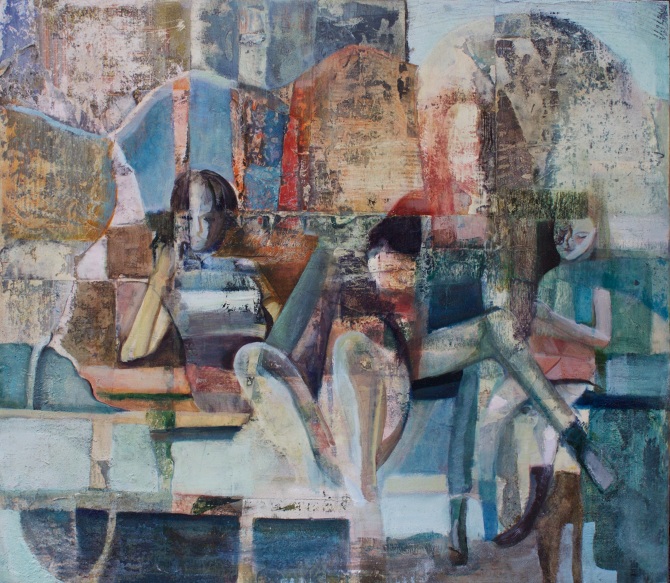 Margaux Smith, In a Year of 13 Moons, 2016, collage and oil on panel. Image courtesy of LE Gallery
Margaux Smith, In a Year of 13 Moons, 2016, collage and oil on panel. Image courtesy of LE Gallery
Smith then digs through the layers of material by sanding the surface manually or with mechanical tools. When she uses sandpaper, the abrasion lines are circular, delicate and controlled; almost palm-print like. However, when she uses industrial tools, like a dremel or a palm sander, she induces a quick, deep and violent, mostly uncontrolled movement into the painting. For Smith, losing control over her gesture is a fresh way to tackle her own aesthetic and to explore limitless possibilities.
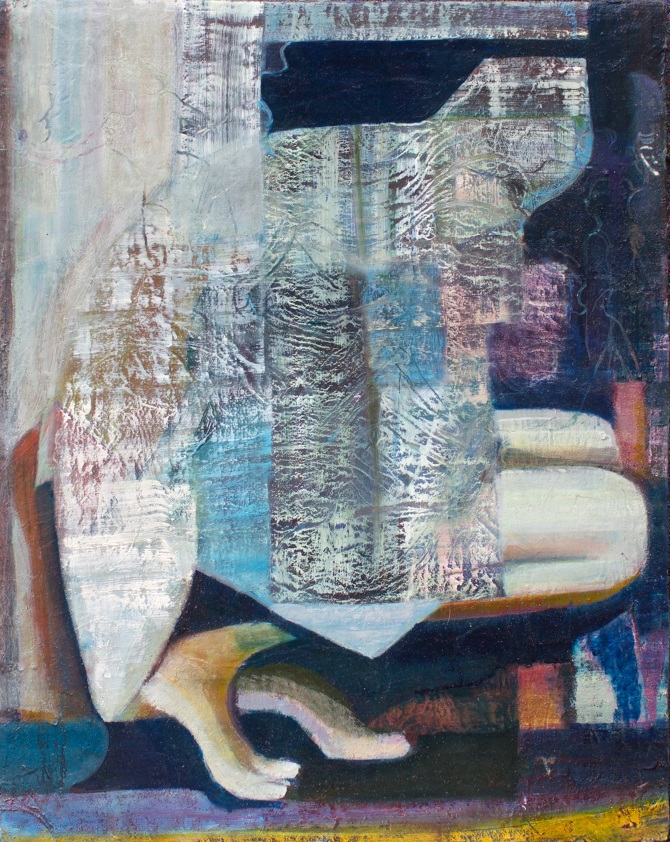 Margaux Smith, The Blue Hour, 2016, collage and oil on panel, 20″ x 16″. Image courtesy of LE Gallery
Margaux Smith, The Blue Hour, 2016, collage and oil on panel, 20″ x 16″. Image courtesy of LE Gallery
The art of Margaux Smith is easily comparable with that of a set designer who carefully assembles the decor for her characters to reveal their intimate narratives and evolve it in front of our eyes. As the viewers look upon the multi-layers of material, they can sense and almost recognize the references to Art History, classic cinematic scenes, popular photography and the aesthetic of modern masters. The influence of synthetic cubism is the one that struck me the most because in her works a multiplicity of instants and angles are captured into one plane. Smith also feels close to the Nabie Edouard Vuillard, mostly for the intimacy and the unity within his domestic interior scenes. Furthermore, Max Ernst remains a big inspiration with his “frottage” and “grattage” techniques.
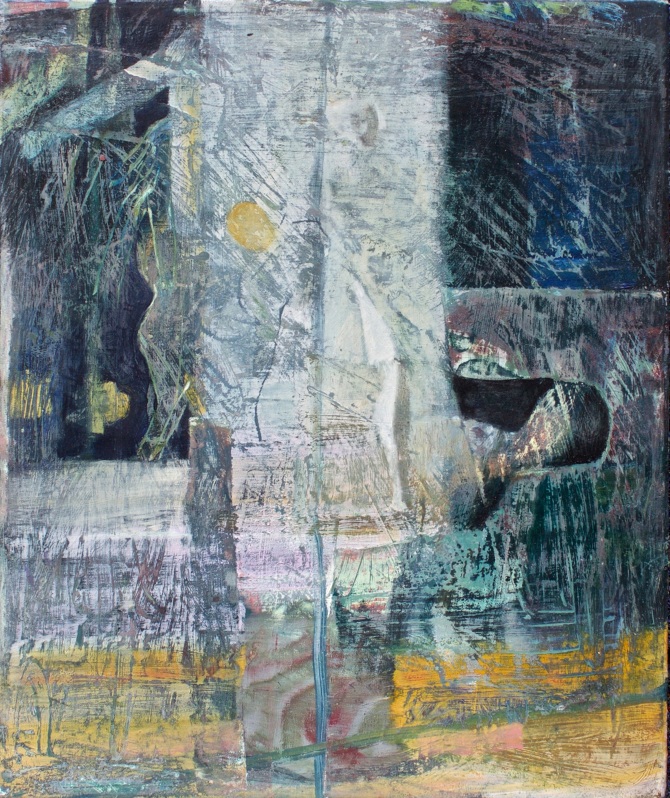 Margaux Smith, Street Scene, 2016, oil on panel. Image courtesy of LE Gallery
Margaux Smith, Street Scene, 2016, oil on panel. Image courtesy of LE Gallery
In the show, What The Moon Saw, by integrating the freedom of abstract gestures with a complex figurative vocabulary, Smith achieved a language of her own. She is not interested in producing art that is immediately graspable, but demands a few minutes of your time in order to reveal a familiar but intangible artistic experience.
Camila Jourdain
*Exhibition information: June 3 – 25, 2016, LE Gallery, 1183 Dundas St. W. Toronto. Gallery hours: Wed – Sat, 12 – 5 pm.
